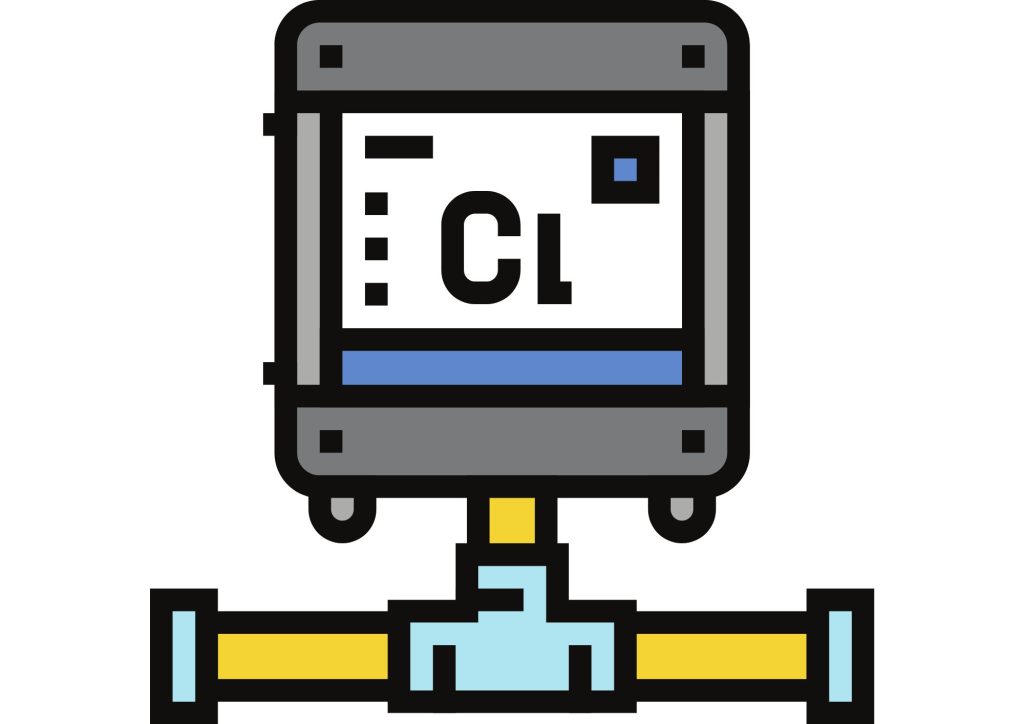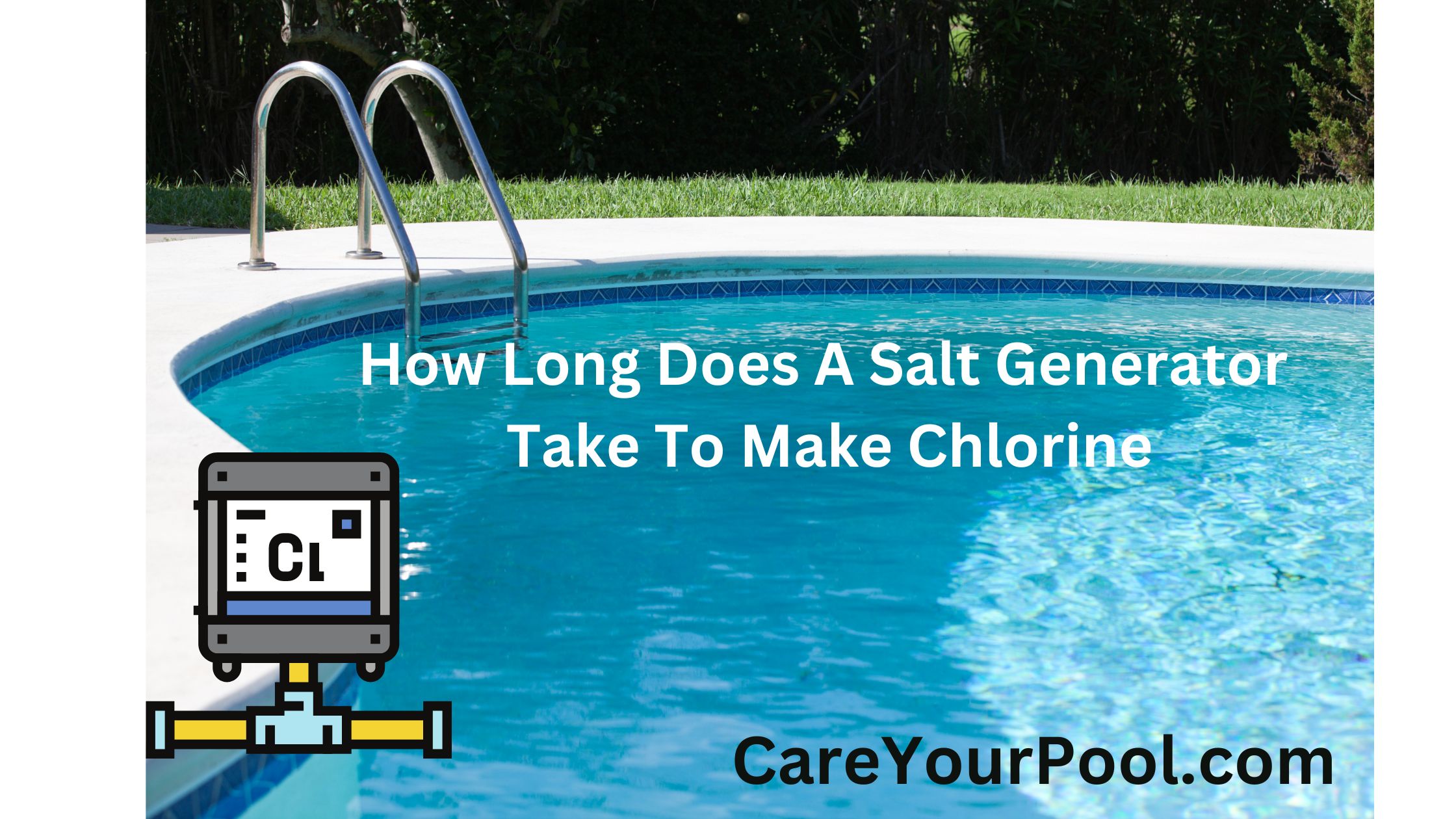One of the central questions in the process of chlorine production is how long should it take to make chlorine. This is a very tough question to answer, especially when concerns about the cost of operation are taken into account.
In this article, we dive deep into the matter: How long does a salt generator take to make chlorine? How does a salt generator work? And how long does a salt generator last?
The amount of chlorine you want to produce, how frequently your generator will run, and how quickly you want it to run will all affect how long it takes to produce chlorine using a salt generator.
It can take a few hours or more than a day. It’s crucial to be aware that chlorine production will be lower than usual the first time you utilize your salt generator equipment. This is due to the fact that the device must run for around 24 hours before performing at its best.
What does a salt chlorine generator do?
Salt chlorine generators are a great way to disinfect your swimming pool, and they’re also less costly than traditional chlorine generators. But they have one big drawback: they generate chlorine gas.
At high concentrations, chlorine gas can be deadly. Chlorine generators make chlorine by electrolyzing salt, which is a natural substance that’s abundant in the ocean and lakes.
You can also purchase pure sodium chloride in bulk at any pool store. The only issue is that they require regular maintenance—and if you don’t maintain them, the result can be an unpleasant experience for swimmers.
Salt chlorinators work by combining sodium chloride (salt) with water to create chlorine gas. The salt reacts with the oxygen in the water to produce chlorination. This process can be used on all types of pools, including saltwater pools.
Chlorine is a strong chemical that’s used to sanitize swimming pools. It kills germs and bacteria, making it a great choice for keeping your pool clean and healthy.
Salt chlorinators offer several advantages over traditional chlorine generators. They’re easy to use and can be set up without any special knowledge or expertise in chemistry or engineering–all you need is a power source and some water!
The cost of using a salt chlorinator depends on where you live and what kind of equipment you choose for your pool. Some models are cheaper than others; they may even be free!
You should also consider whether or not there will be an ongoing fee each year or if this will be included in the initial purchase price of your system.
The Chemistry Behind Salt Chlorine Generators
Salt chlorinators are a type of water treatment system that uses a chemical reaction to produce chlorine.
The process by which they work is quite simple: salt and water are added to a container, and then the container is sealed and placed in sunlight or an artificial light source.
The chemical reaction causes the salt and water to combine into sodium chloride (NaCl), which causes the release of chlorine gas. This gas is then collected and used for water treatment purposes.
The chemistry behind salt chlorinators is what allows them to produce chlorine gas efficiently.
When salt and water combine, sodium hydroxide (NaOH) forms; this hydroxide then reacts with calcium oxide (CaO) to form calcium hydroxide (Ca(OH) 2 ), which releases hydrogen ions (H+) from the solution into the air around it.
These hydrogen ions react with oxygen molecules in the air, forming ozone (O 3 ).
Ozone is toxic to humans because it blocks out the sunlight causing vitamin D deficiency disorders such as rickets in children; this condition can cause bone deformities like bowed legs or spasticity if not treated early enough before permanent damage occurs!
How Long Does A Salt Generator Take To Make Chlorine?

The time it takes to make chlorine with a salt generator depends on how much chlorine you want to make, how many times your generator will run, and how fast you want it to run. It can take anywhere from a few hours to over a day.
The first time you use your salt generator system, it’s important to know that the chlorine output will be lower than normal. This is because the unit needs to run for about 24 hours before it reaches peak performance.
| Pool Size | Small Salt Generator Size | Medium Salt Generator Size | Large Salt Generator Size |
| Small | 4-8 hours | 2-4 hours | 1-2 hours |
| Medium | 8-12 hours | 4-8 hours | 2-4 hours |
| Large | 12-24 hours or longer | 8-12 hours | 4-8 hours |
| Extra-Large | 12-24 hours or longer | 12-24 hours or longer | 8-12 hours |
The amount of chlorine that can be made with a salt generator is dependent on the size of the generator and the quality of the salt.
For example, if you’re using a small generator that runs only once every few weeks, then you won’t have as much chlorine as if you were using a larger generator that ran continuously for months at a time.
The number of times your salt generator will run before it needs replacing depends on how often you use it and how large an area you need to cover with it (if there are multiple areas).
For example, if you live in an apartment building where each unit has its own bathroom (and therefore does not share one), then each unit would need its own salt generator so that all rooms could be treated at once rather than having them treated individually.
The number of times your salt generator will run before it needs replacing depends on how often you use it and how large an area you need to cover with it (if there are multiple areas).
For instance, if you live in an apartment building where each unit has its own bathroom (and therefore does not share one), then each unit would need its own salt generator so that all rooms could be treated at once rather than having them treated individually.
How long do salt chlorine generators last?
A salt chlorine generator’s typical lifespan might vary based on factors such as unit quality, maintenance, usage patterns, and environmental conditions. A well-maintained salt chlorine generator can last 5 to 7 years on average. However, with proper care and maintenance, some units have been known to last up to ten years or more.
It should be noted that these are typical values and that individual experiences may differ. A salt chlorine generator’s longevity is also affected by elements such as water chemistry, operational conditions, and the individual brand or type of the device.
The typical lifespan of a salt chlorine generator might vary depending on factors such as unit quality, maintenance, usage patterns, and environmental conditions. On average, a well-maintained salt chlorine generator can last 5 to 7 years. However, with careful care and maintenance, some units can last for ten years or more.
It should be mentioned that these are normal ideals and that personal experiences may vary. The longevity of a salt chlorine generator is additionally affected by factors such as water chemistry, operational conditions, and the device’s specific brand or kind.
Alright, you have an idea about how long do salt chlorinators last, but what about how to test a salt chlorinator cell?
Conclusion
A salt generator is an alternative water purification method to a salt-chlorine generator. It is used to dechlorinate and make pure water of any kind of water in any condition.
It makes chlorine from a dry cell which uses the electrolysis process to produce chlorine. The salt is used with the dry cell and magnesium in order for it to generate chlorine and sanitize the water.
Before you decide to purchase a generator, or even better, prior to installing it if you already have one, make sure that you know how long it takes to produce chlorine; otherwise, you might be in for some major disappointment.
If you have any more queries like how to add salt to pool with salt water chlorinator, don’t feel shy to roam around our site.
Read more, learn more:
- How to raise bromine level in pool?
- How do pool lights work?
